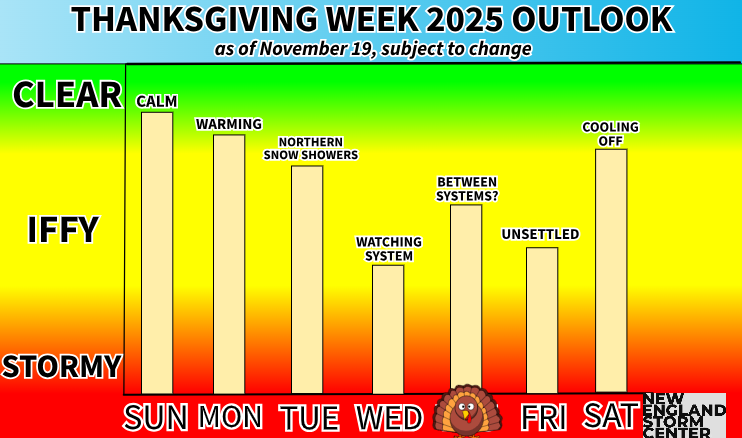Nor'Easter Takes Significant Southward Trend; What We're Expecting and Why it Happened
- Tim Dennis
- Feb 12, 2024
- 4 min read
This morning, our forecast post focused on the fact that models had begun to trend Tuesday's nor'easter more southward. We noted that this southward shift did three major things to the expected outcome of the storm. First, it would push the higher snowfall amounts further south. Second, it would lead to less mixing and more snowfall and finally, it would lead to a later start time for the snowfall.

Today, this southward trend has continued. It's continued to the point where some big changes have been made to expected snowfall. We did note this morning that we would likely have to cut down on snow totals across northern New England. Snow totals have continued to shift further south.
5-10 inches is now looking like the jackpot zone likely toward the Massachusetts south shore, Rhode Island and southern Connecticut. Snowfall intensity and total accumulation will likely steadily decrease heading north of these areas. We always knew there would be a sharp northern cutoff for snowfall with this storm, it's just now looking like that sharp cutoff will be further south. Most, if not all, of northern New England will miss out on snowfall.

With all of that said, we do need to watch out for a potential "windshield wiper" effect, where models flop back and forth. This storm has had a large range from the get-go and has been an interesting one to track, for sure. Our updated snowfall map does take this possibility into consideration, but a southerly track is now more likely due to the reason we go into later in this article. We're leaning toward the lower end of the above numbers. Heavy snowfall rates remain likely across parts of southern New England with whiteout conditions possible for southern Massachusetts, Rhode Island and southern Connecticut. Bust potential has become high with this storm.
With frequent gusts around 40+mph and heavy snow falling that will reduce visibility, a blizzard is certainly possible on Cape Cod. Official blizzard criteria are as follows: sustained winds or frequent gusts of at least 35mph and reduced visibility to a quarter mile or less for at least three consecutive hours. That is certainly possible on Cape Cod and the south shore. The question will be if snowfall rates are heavy enough to reduce visibility and if the conditions can last three hours. It will be something to watch. The total amount of snowfall does not matter for an official blizzard.
Snow will begin to fall in Connecticut early in the morning and will spread northeast through the morning. The heaviest of the snow will likely fall from the mid-morning through mid-afternoon.
Expected weather around noon Tuesday:

The wind forecast remains largely unchanged. Widespread strong winds will not be a major concern with this storm. Gusts may reach 50-60mph on Cape Cod for a couple hours on Tuesday. Elsewhere, gusts will generally remain below impactful levels. The only caveat is that heavy, wet snow sticking to the branches will only be stressed further by any gusts.

So, what exactly led to this southern shift? It comes down to the phasing (or lack thereof) between the southern stream energy and the northern stream energy. In an early article for this storm, we wrote:
The low passing near New England's south coast (the southern stream energy) will likely interact with a trough crossing the Great Lakes (the northern stream energy). The amount of interaction (or phasing) between these two pieces will be key in how the storm amplifies and how heavy precipitation (snow or rain) may be.
In an article we published on Saturday, we noted that the trends were favoring less interaction. We wrote:
At this time, it does not look like the two energy pieces will interact all that much. That is helping to keep the storm's track suppressed offshore. That will also help keep the storm colder with the highest snow impacts in southern New England.
Despite this, the storm was trending further north at that time. Most storms for New England this winter season initially began with a southerly track before trending further north as the storm got closer. It appeared that just the right amount of interaction would occur between the northern and southern streams to bring the storm near the benchmark. We were anticipating a northerly trend, so when it happened, we were quick to jump on board.
A graphic we used in Saturday's article:

Today, models took a last minute (really a last second) shift toward little interaction between the two streams. This is thanks to a slower and less amplified southern stream (which is the main storm system). This comes as the northern stream energy moves through quickly. This is the main reason why the storm is getting suppressed south.
500mb vorticity showing the northern stream and southern stream energy pieces failing to phase together:

In this morning's forecast update, we wrote:
...amounts will likely drop off quickly heading further north amid dry air. We need to watch today's trends closely as further southward shifts will lower amounts even more. There is growing bust potential for all in northern New England.



Comments